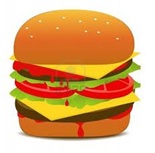Just imagine that “text types” as we know them were thrown out for a day and we inspired students to write a quirky creative story that engaged them in vocabulary development and sentence and paragraph structure. Try this idea to whet their appetite for creative writing.
Firstly discuss with the student/s what creative writing is all about.
1) Explain the idea of the potential audience. Who are they writing for? How are they going to keep the reader captivated?
2) Discuss the importance of a GREAT introduction that leaves a little cliff hanger to keep the reader interested.
3) Do a recap of adjectives and adverbs and how they enhance nouns and verbs.
4) Discuss the importance of dictionaries and thesaurus’s to use new words and different words in the correct context.
5) Talk about characterization and how often the characters in the story gives it a real interest.
6) Recap how descriptions are and what creative writing is all about in order to make the reader feel like you are taking them on a journey.
7) MOST IMPORTANTLY, provide examples of some good short stories and MODEL writing. A good short story shows the student/s how to bring all the pieces together.
I use the commonly used hamburger example to demonstrate the correct way to structure a story and differentiate between an A and C grade piece of writing as follows:
C: *Simple introduction and conclusion.
*One of two pieces of information in the body on the topic.
*Use of simple sentences.
*Uses repetitive, simple vocabulary.
*Has not answered the question given.
*Poor editing and proof-reading skills.
B: *More detailed introduction and conclusion

*Two to four pieces of information in the body
*Uses some complex sentences.
*Uses major connectors.
*Demonstrates good spelling and grammar skills.
*Demonstrates a reasonable range of vocabulary usage i.e. meaning/context.
*Demonstrates some understanding for editing and proof reading.
A: *Has a detailed introduction with a thesis sentence.
*Concludes essay with a strong conclusion that supports the points in the essay.
*Uses more sophisticated vocabulary.
*Writes detailed paragraphs that begin with a topic sentence.
*Uses major and minor time connectors.
*Show a very good understanding for, and uses a range of vocabulary.
* Answers the question given.
* Demonstrates thorough editing and proof reading.
Now we arrive at the ‘five jars and a story” strategy. Discuss with students the different components of a narrative. Put variety of examples of these components in jars on laminated card for continued use. This is where students choose one idea from each jar to help them plan their story.
When: When did the story take place? This could be from an ancient to future period in time.
Where: Where did the story happen? This could be from the depths of the ocean to a place in space.
Who: Who are the characters in the story? Have students choose up to four character types from the jar.
What: What problem evolves in the story? Students should be instructed to know that this is the most important part of the story as it engages the reader and the place where the “ingredients” of the story can be enriched.
How: How do the characters of circumstances resolve the problem? This section should be one paragraph and lead to the concluding paragraph of the story.
When they have randomly made their selections have them make a story web plan as a guide for their writing.
Most importantly, make sure your student/s enjoy the journey of writing their own creative story. Have dictionaries, word banks and a thesaurus available for them to enjoy developing interesting vocabulary. Allow them to publish their story on the computer using interesting combinations of fonts and clip art. Encourage them to illustrate their story by themselves. Mount the story onto cardboard and laminate it to preserve it for years to come.



